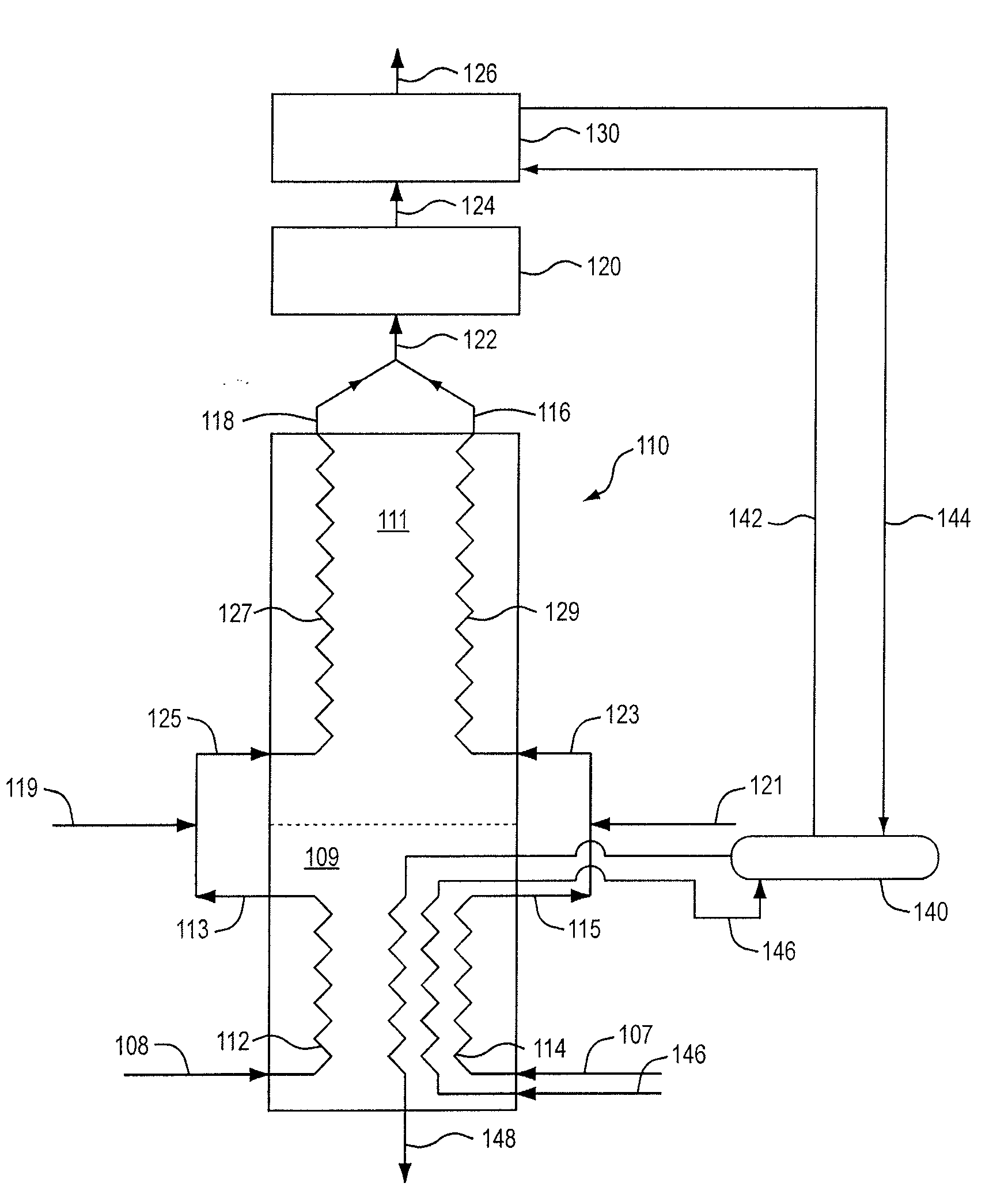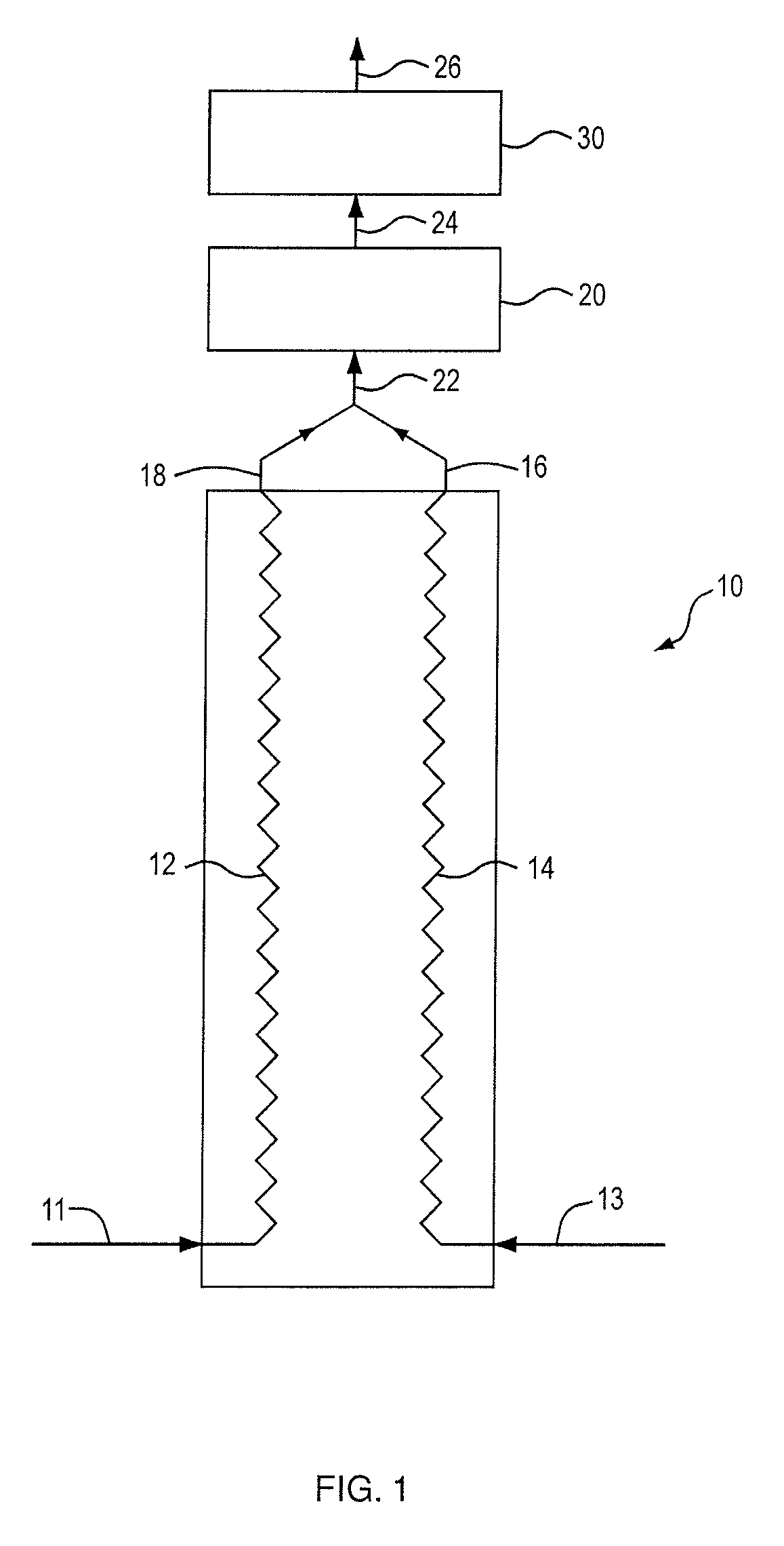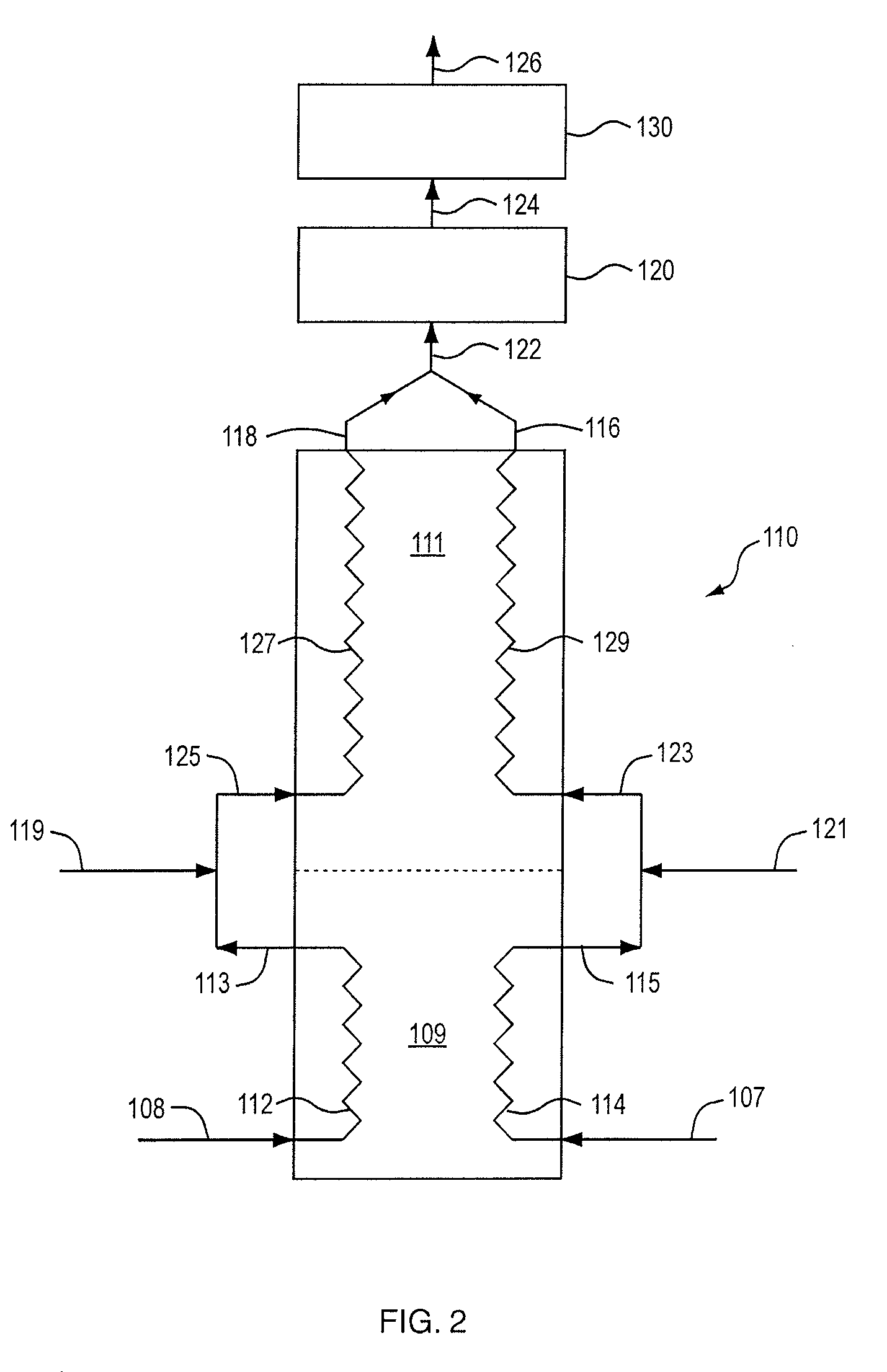Adiabatic reactor to produce olefins
- Summary
- Abstract
- Description
- Claims
- Application Information
AI Technical Summary
Benefits of technology
Problems solved by technology
Method used
Image
Examples
example i
[0053]The following example assumes two cracking coils, coil 1 and coil 2, in a conventional pyrolysis furnace. Under the prior processes of cracking to form olefins, each coil contains a stream comprising a mixture of 1000 Kg / h of naptha and 500 Kg / h of dilution steam. Feed conversion is 75% at a coil outlet temperature of about 850° C.
example 2
[0054]In this example, pyrolysis furnace with two cracking coils is assumed. Coil 1 carries 2000 Kg / h naptha and 400 Kg / h dilution steam. The naptha in this coil is cracked to about 50% conversion in the pyrolysis furnace by controlling the residence time in the furnace. By maintaining a shorter residence time, the coil outlet temperature will be about 850° C. In coil 2, approximately 1800 Kg / h of steam is carried. The steam in coil 2 is superheated in the furnace to about 1000° C. The naptha / steam mixture in coil 1 is mixed with the steam from coil 2 external to the furnace in an adiabatic environment. The energy in the superheated steam provides the energy required for further conversion of the hydrocarbons. Total conversion of 70% or more may be obtained.
[0055]After a period of time, the flow through the coils is switched. Coil 1 carries steam only and coil 2 carries the naptha / steam mixture. The steam flow in coil 1 removes some or all of the coke formed on the coil during prior...
PUM
| Property | Measurement | Unit |
|---|---|---|
| Temperature | aaaaa | aaaaa |
| Temperature | aaaaa | aaaaa |
| Residence time | aaaaa | aaaaa |
Abstract
Description
Claims
Application Information
 Login to View More
Login to View More - R&D
- Intellectual Property
- Life Sciences
- Materials
- Tech Scout
- Unparalleled Data Quality
- Higher Quality Content
- 60% Fewer Hallucinations
Browse by: Latest US Patents, China's latest patents, Technical Efficacy Thesaurus, Application Domain, Technology Topic, Popular Technical Reports.
© 2025 PatSnap. All rights reserved.Legal|Privacy policy|Modern Slavery Act Transparency Statement|Sitemap|About US| Contact US: help@patsnap.com



